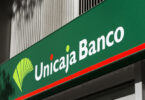On Friday, the European Central Bank (ECB) submitted a 42-page opinion on the draft European Union (EU) regulations for Markets in Crypto-Assets (MiCA).
Given the document length, there are numerous suggested changes. One is to give central banks veto power over stablecoins. The draft MiCA legislation already proposes that ‘asset referenced tokens’ might be refused authorization by a ‘competent authority’. But which authority depends on the nature of the token. Hence the ECB suggests that where such a token is like a payment scheme, the exclusive right to refuse authorization should sit with the ECB or the national central bank where the token is issued.
This is just another example of the tricky overlap issues that crypto-assets encounter worldwide, which this draft regulation is trying to address. The challenge is if it’s too detailed, then new assets will fall through the cracks. But that can also happen if it’s not sufficiently detailed.
A novel concern raised by the ECB is the proposed ban on interest-bearing crypto-assets similar to e-money. It states this could create financial stability risks. Reading between the lines, the ECB is saying with negative interest rates, holding e-money that doesn’t bear interest could become rather attractive.
The ECB raised the usual stablecoin worries that if people switched to stablecoins, these end up competing with banks for deposits, raising the cost of funding for banks.
It also reiterated concerns about the assets used to back stablecoins. The demand for assets such as treasury bills might increase, impacting their price and distorting markets. The ECB raised the risk of stablecoins could challenge the Euro for payments.
As stated, the MiCA draft regulation provides for a right to refuse authorization, but the ECB points out that it won’t always be predictable that a stablecoin might become significant. Hence the legislation should allow for some stress testing after a stablecoin is in circulation. Should the scale become substantial, the central bank could restrict the scale of issuance, and the issuer may be required to raise additional capital.
ECB concerned e-money, stablecoins become attractive when interest rates negative Meanwhile five months ago, the ECB published its paper on a potential central bank digital currency or digital euro. The ECB noted that the MiCA legislation distinguished between crypto-assets and a CBDC but asked for additional differentiation.







